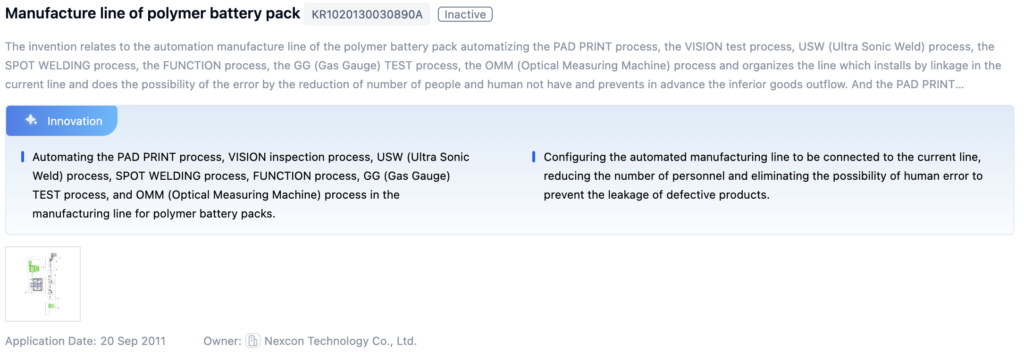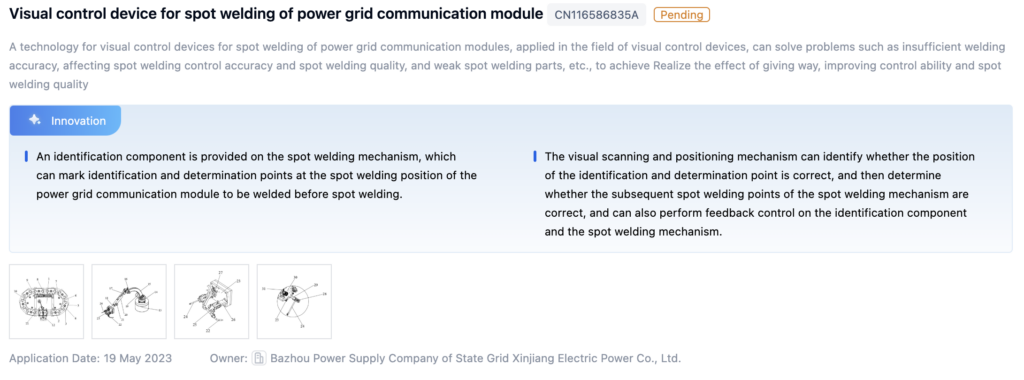
Technical Background and Objectives
Background
Spot welding is widely used in automotive and manufacturing sectors. Improving spot welding quality is crucial for ensuring structural integrity and safety of welded components. Patent data shows a consistent upward trend, indicating growing interest and investment in enhancing spot welding quality. However, literature data shows fluctuations, implying active but variable academic research influenced by factors like funding and research priorities.

Objectives
The primary objective is improving spot welding quality, improving reliability and durability of welded components. This research aims to identify and address key factors contributing to weld defects, developing innovative techniques to minimize these defects and achieve stronger, more consistent welds.
To get a detailed scientific explanations of Spot welding, try Eureka.
Technical Current Status Analysis
Spot Welding Overview
Spot welding is essential in automotive, aerospace, and construction industries for joining body panels, structural components, and metal assemblies. The quality of spot welds directly impacts the structural integrity, safety, and durability of the final products.
Applications and Impact:
- Automotive: Ensuring rigidity and strength of vehicle bodies.
- Aerospace: Joining aircraft structures and critical assemblies.
- Construction: Joining metal structures like steel frames and reinforcements.
Technical Characteristics and Challenges:
- Material Properties: Thickness, coatings, and alloy composition impact weld quality.
- Surface Conditions: Contaminants and oxides affect weld formation and quality.
- Electrode Wear and Maintenance: Proper maintenance is crucial for consistent weld quality.
- Process Parameters: Current, electrode force, weld time, and cooling rate need optimization.
- Weld Monitoring and Quality Control: Effective systems are necessary to detect and prevent weld defects.
- Operator Skill and Training: Skilled operators and proper training are essential.
Technological Paths:
- Advanced Materials and Surface Engineering: New materials and surface treatments for better weldability.
- Intelligent Process Control and Monitoring: Advanced control systems using machine learning and AI.
- Electrode Design and Maintenance Strategies: Innovative designs and maintenance protocols.
- Weld Quality Inspection and Testing: Advanced non-destructive testing techniques.
- Simulation and Modeling: Computational tools for optimizing parameters and predicting quality.
- Training and Skill Development: Comprehensive training programs and standardized procedures.

Research Content
Research Objectives
Improving spot welding quality by developing innovative techniques and methodologies to minimize defects and achieve stronger, more consistent welds.
Research Direction and Focus
Weld Parameter Optimization
- Conduct experimental studies to identify optimal parameter ranges for various materials.
- Explore advanced control systems and real-time monitoring techniques.
Material Characterization and Compatibility
- In-depth characterization of materials used in spot welding.
- Develop tailored welding strategies and pretreatment methods.
Electrode Design and Maintenance
- Investigate novel electrode materials, coatings, and geometries.
- Develop optimized electrode maintenance protocols.
Weld Quality Monitoring and Inspection
- Explore advanced non-destructive testing techniques like ultrasonic testing and thermal imaging.
- Investigate automated inspection systems for real-time monitoring.
Computational Modeling and Simulation
- Develop models to predict weld quality and optimize parameters.
- Use simulations to guide experimental investigations.
Technical Development Roadmap
Key Areas of Advancement
- Resistance Spot Welding Process Innovations: Adaptive control, multi-ring electrode designs, and integrated in-process monitoring.
- Advanced Welding Materials and Consumables: High-strength steel welding wires, nanocomposite electrode coatings, and dissimilar metal joining techniques.
- Automation and Robotic Spot Welding Systems: Intelligent weld path planning, force-controlled robotic welding, and multi-robot coordinated welding cells.

Main Player Analysis
Key Players and Focus
- Tianjin University: Research on laser welding, resistance spot welding, and quality monitoring.
- Canon Inc.: Extensive patent portfolio on welding processes, equipment, and control systems.
- NIPPON STEEL CORP.: Optimization of welding processes for various steel grades and alloys.
- Daiichi Shokai Co. Ltd.: Focus on welding processes, materials, and equipment.
- Shanghai Jiao Tong University: Research on resistance spot welding, friction stir spot welding, and quality monitoring.
Current Technical Solution Overview
Monitoring and Assessment of Spot Weld Quality
- Electrical Signals: Monitoring current, voltage, and resistance during welding.
- Ultrasonic Techniques: Analyzing ultrasonic signals for defects and weld quality.
- Thermal Monitoring: Using infrared sensors and thermal imaging.
- Integrated Systems: Combining multiple techniques for real-time monitoring.
- Destructive and Non-Destructive Testing: Physical inspection, metallographic analysis, and ultrasonic testing.
Controlling and Optimizing Welding Parameters
- Monitoring and Controlling: Real-time adjustment of welding parameters.
- Weld Quality Assessment: Acoustic emissions, thermal signatures, and dynamic resistance signals.
- Adaptive and Intelligent Control Systems: Using AI and machine learning.
- Non-Destructive Testing: Evaluating weld quality without damaging the workpiece.
Improving Spot Weld Quality through Material Selection and Surface Preparation
- Material Selection: Choosing materials with suitable properties.
- Surface Preparation: Cleaning, degreasing, and removing contaminants.
- Monitoring and Control Systems: Real-time quality assurance.
- Weld Surface Analysis: Evaluating surface characteristics for defects.
- Optimization of Welding Parameters: Adjusting parameters for better quality.
Weld Joint Design and Post-Weld Treatment
- Weld Joint Design: Optimizing geometry and material combinations.
- Monitoring and Evaluation: Analyzing thermal profiles and weld images.
- Post-Weld Heat Treatment: Improving mechanical properties.
- Quality Inspection: Non-destructive testing methods.
- Electrode Design and Weld Face Preparation: Improving electrical contact and heat transfer.
Inspection and Quality Control Systems
- Electrical Signals: Inspecting quality through electrical signal analysis.
- Ultrasonic and Acoustic Emission Techniques: Detecting defects through sound waves.
- Visual Inspection Systems: Using cameras and imaging techniques.
- Weld Quality Prediction and Control: Analyzing process parameters.
- Integrated Inspection Systems: Combining multiple techniques for comprehensive assessment.
Key Patent Interpretation
Patent Highlights
Patent 1: Manufacture Line of Polymer Battery Pack
- Core Invention Points:
- Automating PAD PRINT, VISION inspection, USW, SPOT WELDING, FUNCTION, GG TEST, and OMM processes.
- Connecting to the current line to reduce human error and prevent defective product leakage.

Patent 2: Visual Control Device for Spot Welding of Power Grid Communication Module
- Core Invention Points:
- Identification component marks determination points before welding.
- Visual scanning and positioning mechanism checks correctness and performs feedback control.

Patent 3: Multi-Spot Friction Stir Welding and Method and Device for Multi-Spot Friction Stir Brazing
- Core Invention Points:
- Multiple synchronously driven stirring heads for efficient multi-point welding.
- Simultaneous welding reduces time and improves quality.

Possible Research Directions
- Monitoring and Assessing Weld Quality: Real-time monitoring using electrical signals, acoustic emissions, and thermal profiles.
- Optimizing Welding Parameters: Adjusting current, electrode force, and weld time based on material properties and conditions.
- Weld Joint Design and Preparation: Optimizing joint geometry and surface preparation.
- Post-Weld Treatment and Fatigue Life Improvement: Applying treatments to enhance mechanical properties.
- Quality Control Systems and Methods: Automated inspection, feedback control, and data analysis for consistent quality.
If you want an in-depth research or a technical report, you can always get what you want in Eureka Technical Research. Try now!

